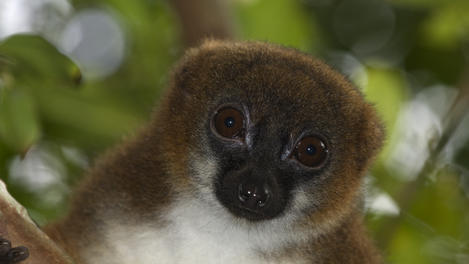Their culture is steeped in taboo and magic, imbuing caves, waterfalls, animals and even some material objects with supernatural attributes.Not for nothing is Madagascar regarded as the world’s number one conservation priority.In fact, all things considered, it barely qualifies as part of Africa: the two are separated by hundreds of kilometres of sea and 165 million years of evolution – long enough for Madagascar’s plants and animals to evolve into some of the weirdest forms on the planet.Throw in a soupçon of pirate history, coastlines littered with shipwrecks, great regional cooking, some of the world’s longest place names, and unfailingly polite and friendly people, and you’ll experience a refreshing take on the overused ‘unique’ tag.Near Ifaty in Southern Madagascar you will see forests of twisted, spiny ‘octopus’ trees and in the west, marvel at the bottle-shaped baobabs, especially the Avenue du Boabab near Morondava.
And the people are no less interesting: arriving here some 2000 years ago along the Indian Ocean trade routes, they grow rice in terraced paddies, and speak a language that has more in common with their origins in Southeast Asia than with the African continent.Forget Hollywood fripperies, Madagascar is like no place else on earth.Nowhere else can you see over 70 varieties of lemur, including one that sounds like a police siren, the world’s biggest and smallest chameleons, and the last stomping ground of the elephant bird, the largest bird that ever lived.Hill peoples live in traditional multistoried brick houses with carved balconies and, in some areas, dance with their dead ancestors in the ‘turning of the bones’ ceremony.And be on the look out for the carnivorous pitcher plant found around Ranomafana, there are over 60 varieties of them.

Take to the quiet Mitsinjo forest for a night walk to hear the frog chorus and spot minute mouse lemurs.Later, cross a spindly bridge over the village’s huge gushing river to find a line of hot tubs in little rooms.Simplicity and a lakeside safari At Camp Bandro at Lac Alaotra, you can glide across the island’s largest lake in a dug out canoe at dawn in search of the gentle bamboo lemur or Bandro.Once submerged in the piping hot water, you relax you instantly.On the other end of the culinary scale, you’ll find La Varangue, a highly regarded restaurant in Antananarivo.Papyrus shoots up around you, and the grey bamboo lemurs never fail to charm.Stay at the wonderfully friendly and low key La Palmerie hotel for home-cooked banana crepes drizzled in chocolate and the chance to meet Dadalira, an 106-year-old local man who has lived through the country’s most dramatic highs and lows.As the sun comes up, your guide pushes through the thick reeds into what looks like planet Pandora.Spot fat, green Parson’s chameleons and the bizarre giraffe-necked weevil.Trek the rainforest and take a hot tub Parc National de Ranomafana is known for its hot springs and lemur-inhabited rainforest.Give something back You’ll be struck by the hospitality of the Malagasy and also the poverty.It’s hardly fine dining, but the people watching and hospitality make the experience priceless.
Spend the day at Akany Avoko in Antananarivo – it’s home for around 120 homeless kids.The camp itself consists of two basic bungalows in stunning garden of roses and includes three delicious meals a day, a bucket shower and access to the lake every morning.Breakfast Malagasy style, and haute cuisine too The French left a lasting impression when they colonized Madagascar.Stride through the thick rain forest and look up to find the huge monochrome creatures high above your head.Head out at dawn for a guided trek in search of the beautiful bamboo lemurs.There are croissants everywhere.Eat out on the veranda over looking the city or in the stylish interior decked with intriguing relics.
For a closer look, visit Vakona Lodge’s lemur island, a sanctuary for rescued lemurs that once lived in captivity.You’ll be greeted by the English director, Steve Wilkinson, and get to wander round the school, meet the children, visit the craft shop, and have lunch in the cafe.As well as funding their education, the charity provides the children with craft workshops, where they can make bags, clothes and screenprint t-shirts; a garden to learn how to grow vegetables; cookery classes; career lessons and training in sustainable energy.Dine Malagasy style at a hotely, one of the slightly dingy roadside establishments, serving up stacks of fried dough balls (mofobols) and super sweet coffee with condensed milk.Meet Mother Nature’s most curious creatures There are four national parks in Andasibe’s rich rainforest, so wherever you are, you can hear the eerie call of the island’s largest remaining lemur species, the Indri.Master chocolatier Lalaina Ravelomanana, who was recently voted among the world’s top five chefs has created a menu to die for, including a taster menu and mains such as grenadine zebu steak with apple cannelloni, a mystery item called explosion du chef and, of course, lots of lovely chocolate.It’s not easy to get here – it takes twelve hours in a minibus taxi on bad roads – but it’s worth it.Other choices will include deep-fried bananas and rice cakes.
Lets Go Go To Madagascar



{ 0 komentar... Views All / Send Comment! }
Posting Komentar